Description
Composite Impermeable Membrane Parameter
| Items | Values | ||||
| Thickness(mm) | 0.75 | 1 | 1.5 | 2 | 3 |
| Density(g/cc) | 0.94 | ||||
| Size stability(%) | 2% | ||||
| Yield strength(KN/m) | 11 | 15 | 22 | 29 | 44 |
| Break strength(KN/m) | 20 | 27 | 40 | 53 | 80 |
| Break elongation(%) | 700 | ||||
| Tear resistance(N) | 93 | 125 | 187 | 249 | 375 |
| Puncture resistance(N) | 240 | 320 | 480 | 640 | 960 |
| Carbon black content(%) | 20% – 3.0% | ||||
| UV resistance(%) | 50% | ||||
Specifications for each category:
1. One cloth and one film (cloth: 100-1000g/m2; film thickness: 0.1-1.5mm)
2. Two cloths and one film (cloth: 80-600g/m2; film thickness: 0.2-1.5mm)
3. One cloth and two films (cloth: 100-1000g/m2; film thickness: 0.1-0.8mm)
4. Multi-cloth and multi-film (cloth: 100-1000g/m2; film thickness: 0.1-0.8mm)
If you need customized products, please refer to the parameters below. Or tell us your needs directly, QIVOC will provide you with cost-effective solutions.
Thickness customized: 0.75mm – 3.0mm
Customized length: 50m, 100, 150m, or any length
Customized width: 1m – 8m, or any length
Surface customization: smooth, single-sided texture, double-sided texture
Color customization: black, white, green, any other color
Minimum order quantity: 1 square meter
Payment method: LC, T/T, Western Union
Supply capacity: 90,000 square meters/day
Delivery time: 7-15 days
Conventional packaging: Composite geomembrane lined roll packaging woven bag or according to your requirements.
Roll size loaded into container: Width 5.8m X Length 50m-100m.
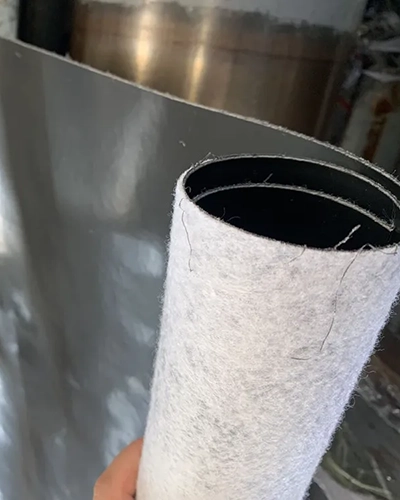
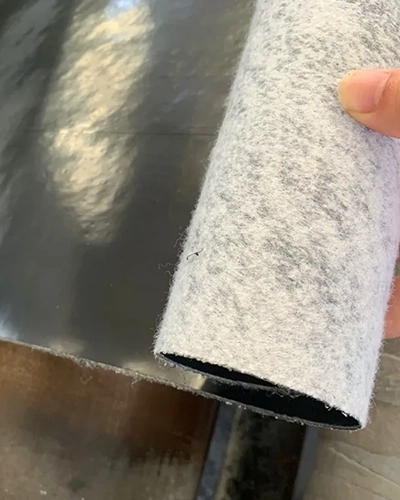
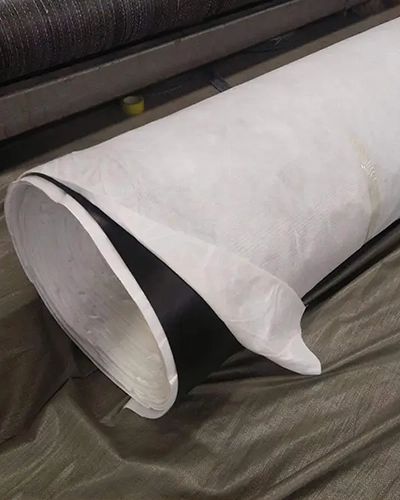
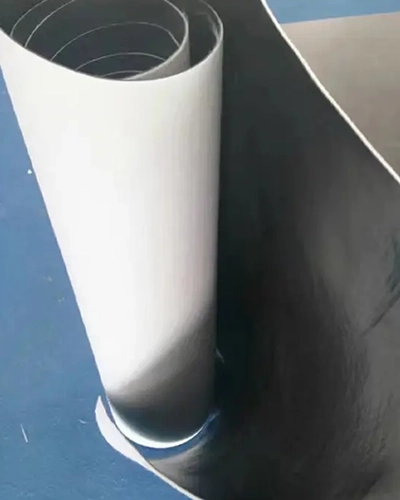
Geotextile Fabric for Waterproofing Advantages
As a composite geomembrane manufacturer with 20 years of experience, we take pride in the following advantages of our products:
- Simultaneously, it retains the characteristics of both geomembrane and geotextile, making it versatile for application in various complex engineering geological conditions, widely employed in intricate and harsh environments.
- It boasts excellent anti-seepage, anti-leakage, moisture-proof, anti-tear, anti-puncture, tensile, anti-aging, and anti-corrosion properties.
- It adapts to a broad range of ambient temperatures.
- With low elongation, uniform longitudinal and transverse deformation, outstanding wear resistance, and robust water barrier properties.
- It exhibits outstanding chemical resistance and UV resistance, ensuring resilience against bacterial and chemical effects, and resisting acid, alkali, and salt corrosion. Its service life is exceptionally long, especially when utilized in low-light conditions.
- Demonstrates stable low-temperature embrittlement performance, coupled with excellent drainage and waterproof capabilities.
- Installation is straightforward and convenient, and the waterproof geotextile fabric is light and soft, facilitating easy transportation and laying. This reduces construction difficulty and enhances overall construction efficiency, all at an affordable price.
Waterproofing Geotextile Membrane Applications
Waterproofing geotextile membranes are typically employed in projects requiring high levels of anti-seepage and tensile strength, such as landfills, pool anti-seepage initiatives, road base waterproofing ventures, and more. Its versatile performance allows it to excel in complex environments.
Additional application areas for geotextile waterproofing membrane include:
- Anti-seepage projects: River anti-seepage projects; Reservoirs; Sewage treatment plants, etc.
- Water conservancy projects: River treatment projects; Artificial lake anti-seepage projects; Landscape lake anti-seepage projects; Dam anti-seepage projects; Channel anti-seepage projects, etc.
- Civil engineering: Anti-seepage treatment for roads and tunnels; engineering dams; Embankments and drainage ditches; Anti-pollution treatment of landfills and scrapyard
- Reinforcement projects: Artificial lakes; Artificial rivers; Tourist lakes; River slope protection; Retaining walls and slope protection
- Oilfield and chemical anti-seepage: Storage tanks; Ponds, etc., in oil fields and chemical plants.
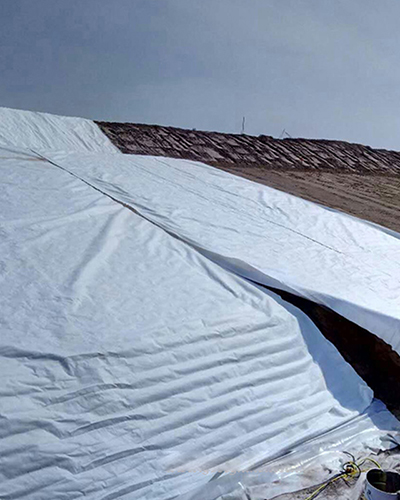
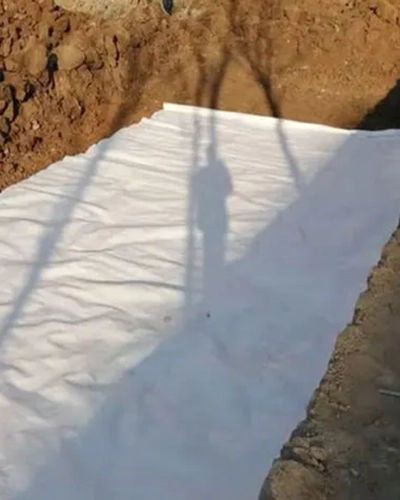
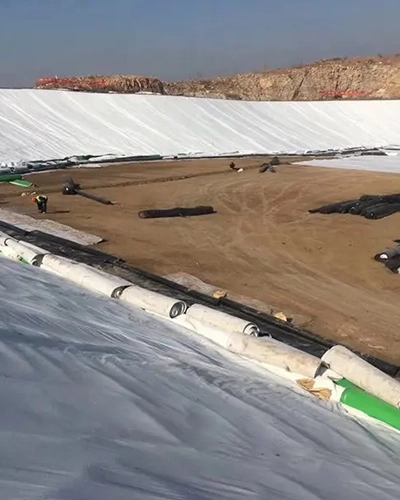

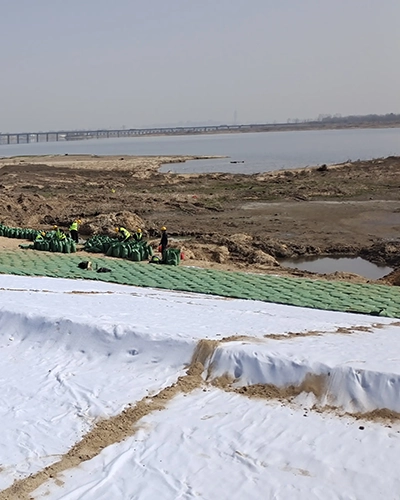
“Have a question? Click the button below to reach out to us directly for personalized support. ”
Rest assured, we’ll respond to your inquiry within 2 hours.
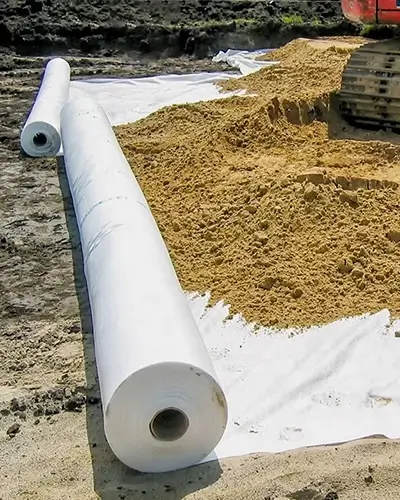
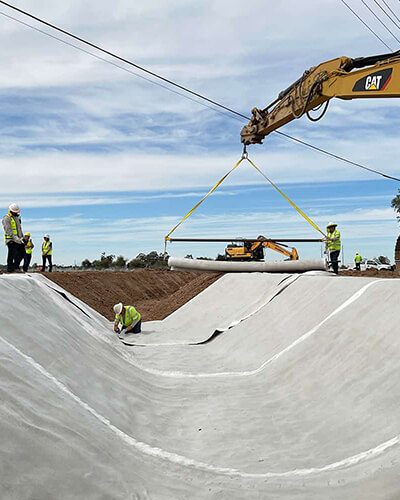
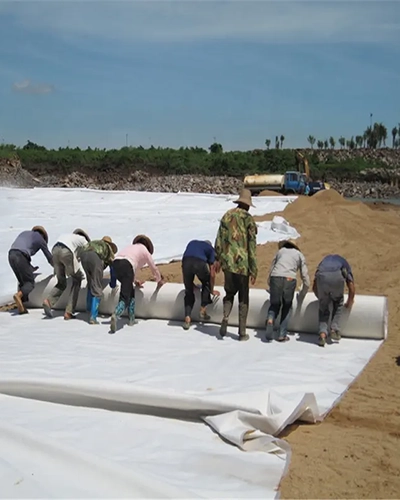
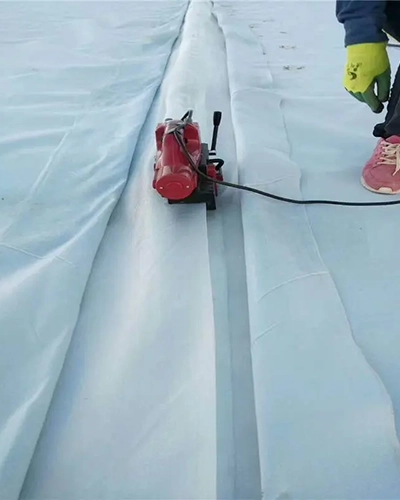

Impermeable Geotextile Membrane Installation Procedures
Using and installing the impermeable geotextile membrane is straightforward and convenient. Below is a standard construction process.
- Ensure the base surface is thoroughly cleaned according to design specifications, crucial for achieving an effective anti-seepage effect. Remove sharp stones, tree roots, and debris completely. The base surface should be tamped tightly with a tamping hammer or plate, ensuring it is both dense and smooth, with no local unevenness permitted.
- Impermeable geotextile laying is divided into two segments: bottom canal placement and slope installation. For horizontal placement, roll along the channel axis. For slope installation, roll along the slope axis direction after passing slope acceptance, ensuring a T-shaped connection with the bottom canal waterproofing geotextile.
- Press the film flat and tightly between film and base surface, avoiding excessive tension. Generally, it should be slightly loose, without leaving bubbles underneath. Due to the thin and light nature of the non permeable geotextile membrane, it is susceptible to wind before the protective layer is laid. Therefore, cover the area with soil while laying the film, avoiding overly large areas at a time.
- Upon identifying a puncture or tear in the impermeable geotextile fabric, promptly repair it using geotextile waterproof membrane adhesive, ensuring coverage three times the damaged area.
- Conduct welding operations after completing the laying process.
- Overlap: Ensure the overlap width is greater than 15cm.
- Heat welding: Suitable for slightly thicker geotextile impermeable membrane base materials, with the weld overlap width not less than 5cm. (Note: Avoid gluing, as it may open when soaked in water for an extended period, compromising the anti-seepage effectiveness.)
Precautions for Installation of Non Permeable Geotextile Membrane
While the construction of composite geomembrane is relatively simple, attention to the following considerations is crucial during installation. Here are specific precautions for waterproof geotextile fabric installation:
- Avoid direct impact on the geotextile waterproofing membrane by stones and heavy objects during construction. It is advisable to lay the membrane and cover it with a protective layer throughout the construction process.
- Anchor the connection between the waterproofing geotextile sheet and surrounding structures using expansion bolts and steel plate battens. Coat the connection parts with a 2mm thickness of emulsified asphalt for bonding, preventing leakage.
- Ensure the soil is compact to prevent uneven subsidence and cracks. Remove turf and tree roots within the anti-seepage range. Lay sand or clay with a small particle size on the contact surface with the membrane as a protective layer.
- When laying, avoid pulling the impermeable geotextile membrane too tightly. It’s better to have the parts buried in the soil at both ends in a corrugated shape, especially when anchored with rigid materials, leaving room for expansion and contraction.
- Implement careful peripheral junction treatment to tightly connect the impermeable geotextile with the surrounding soil. Dig cutoff trenches at the perimeter junction, burying the impervious geotextile in the trenches to block seepage entrances and prevent lateral leakage paths, thus avoiding seepage entering the bottom surface of the anti seepage geotextile and forming blisters.
- Keep joints as short as possible in corners and deformed areas. Unless there are special requirements, avoid welds within 1.5 meters of the top slope or stress concentration area on slopes with a slope greater than 1:6.
- After laying the waterproofing geotextile, minimize walking and moving tools on the membrane surface. Avoid placing any objects that may harm the anti-seepage membrane or carrying items on the membrane to prevent accidental damage.
- For ease of construction and ensuring splicing quality, make the impermeable geotextile fabric as wide as possible to reduce on-site splicing. Cut the composite geomembrane into units according to width and on-site length requirements before construction. Splice it into blocks that meet the required size, roll it on steel pipes, and manually transport it to the working surface for laying.
- Conduct laying in dry and warm weather. To facilitate splicing and prevent stress concentration, lay the waterproofing geo fabric in a wave-shaped relaxation method with a margin of about 1.5%. After spreading, level it and pull it apart promptly.

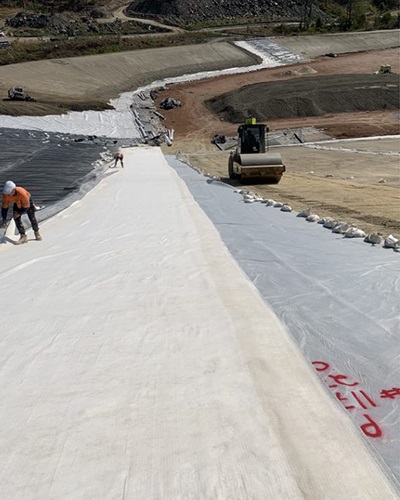
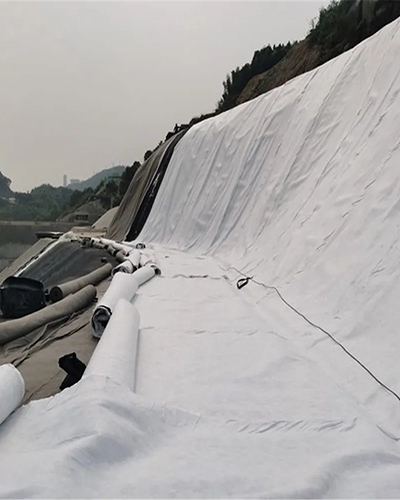

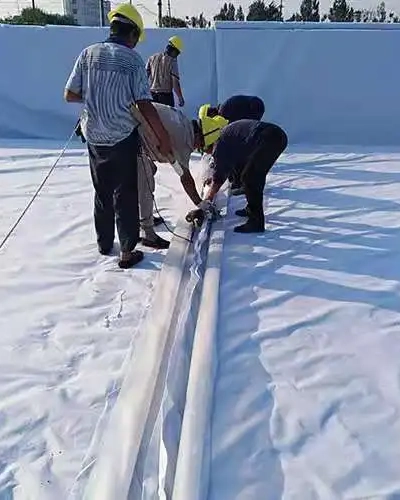
Recent Projects
Discover our recent client projects and explore the range of tailored, personalized support we provide. Share your requirements and receive the ideal solution.

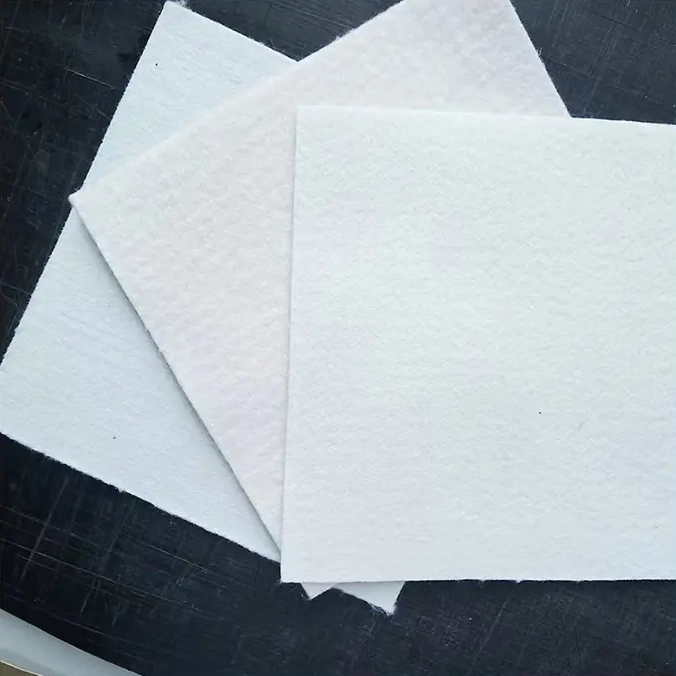
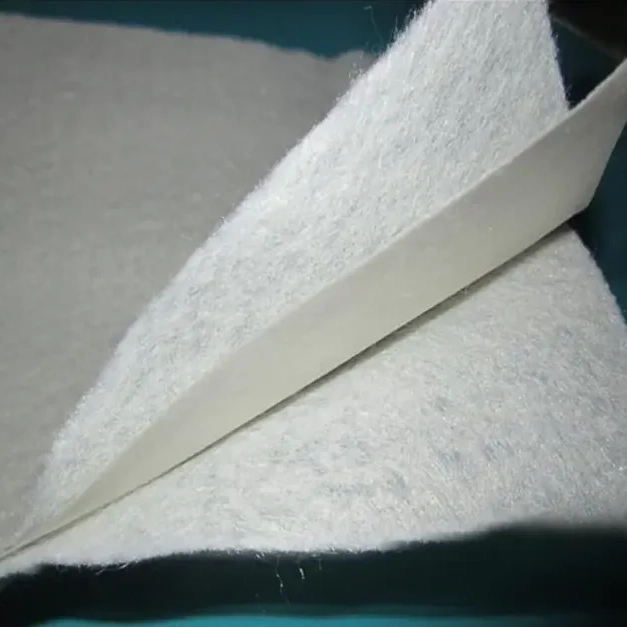
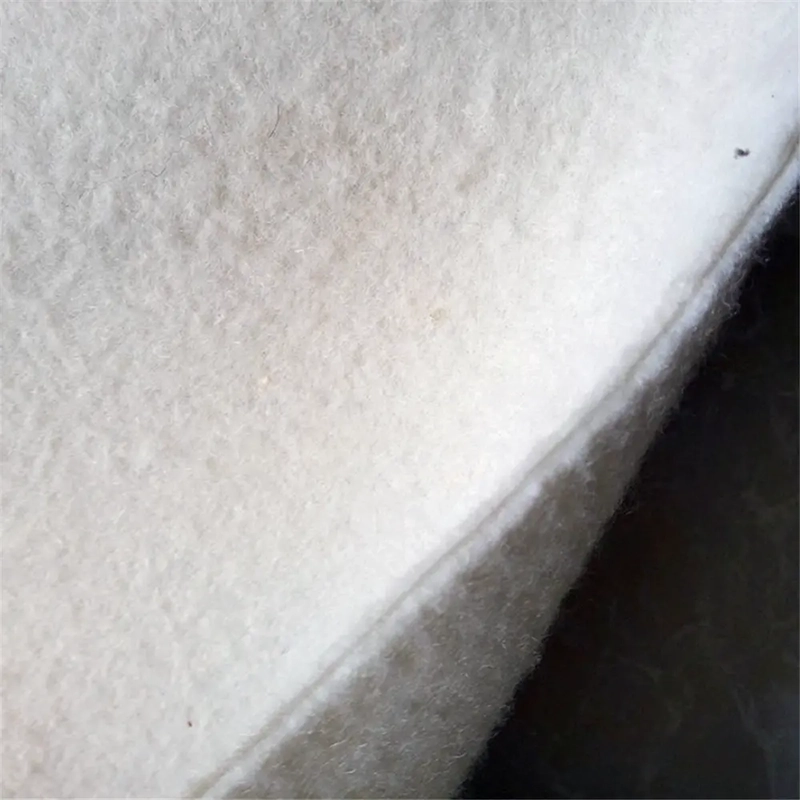



Reviews
There are no reviews yet.